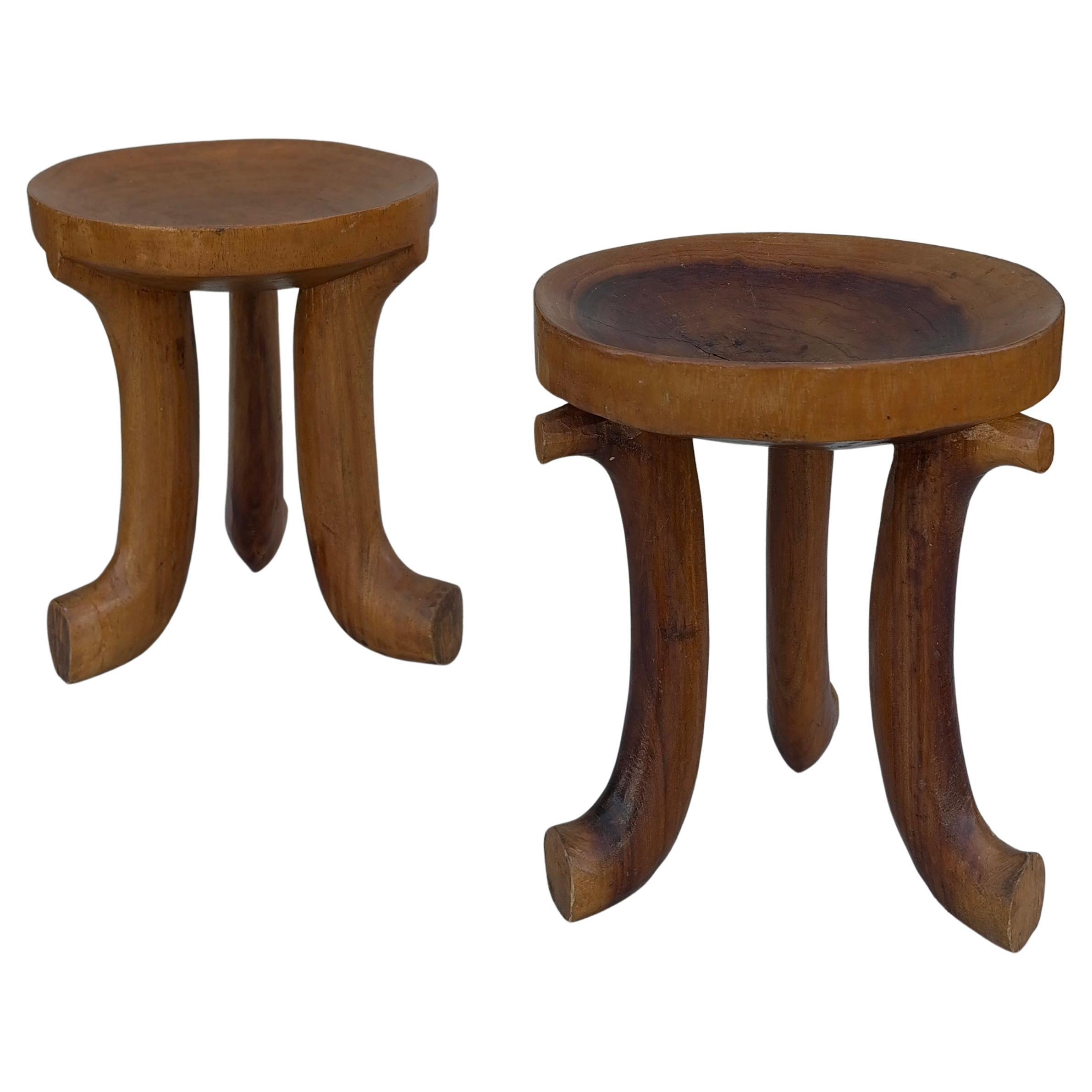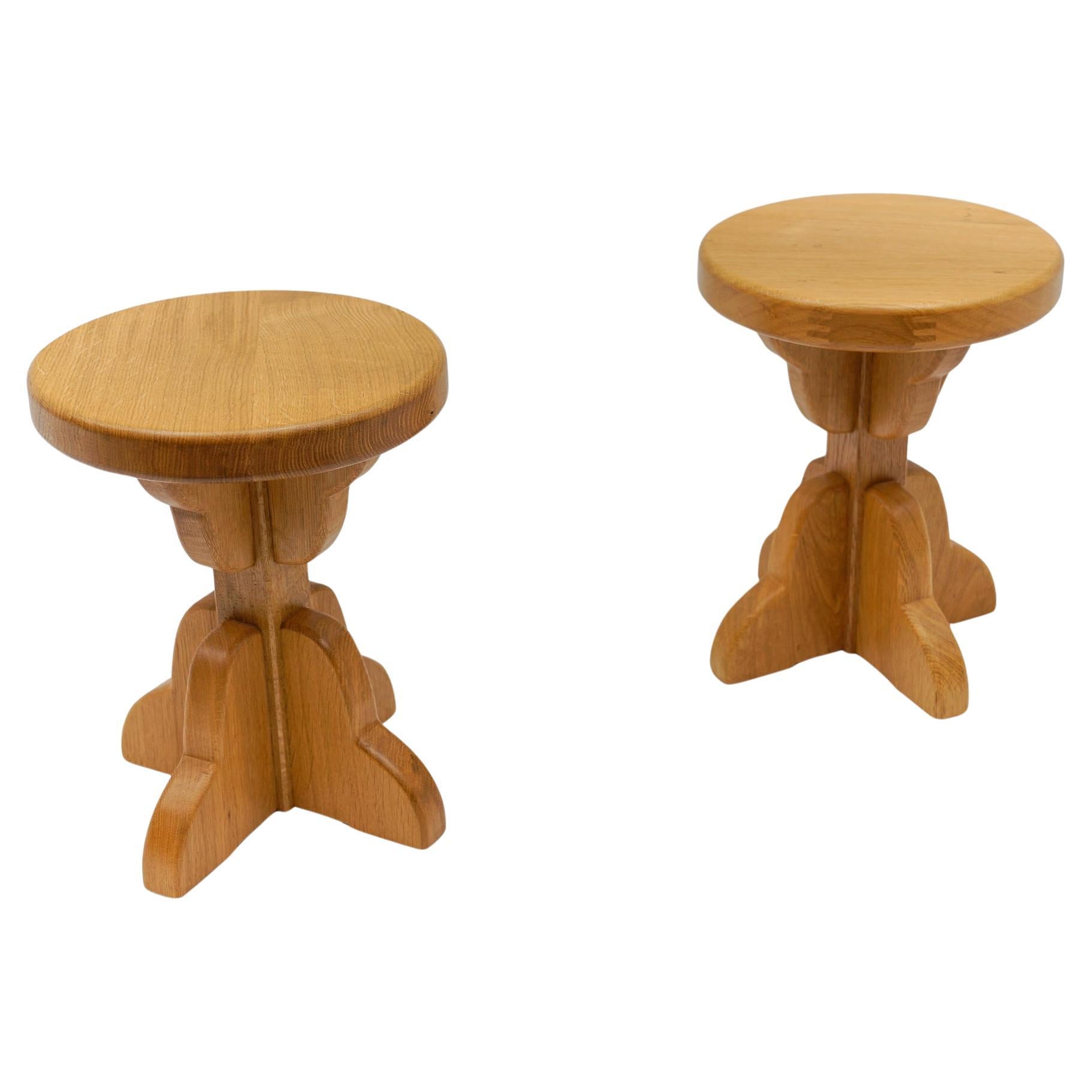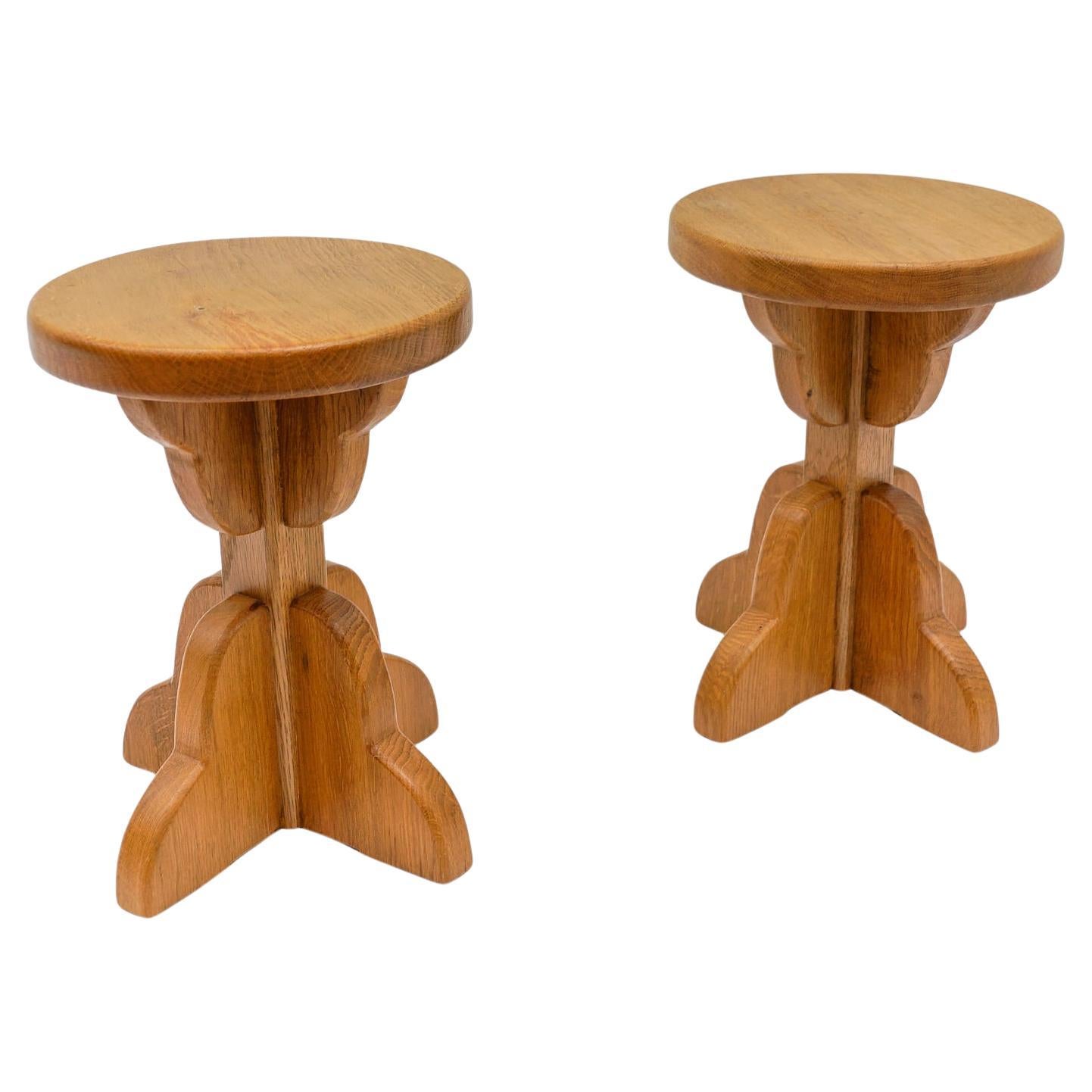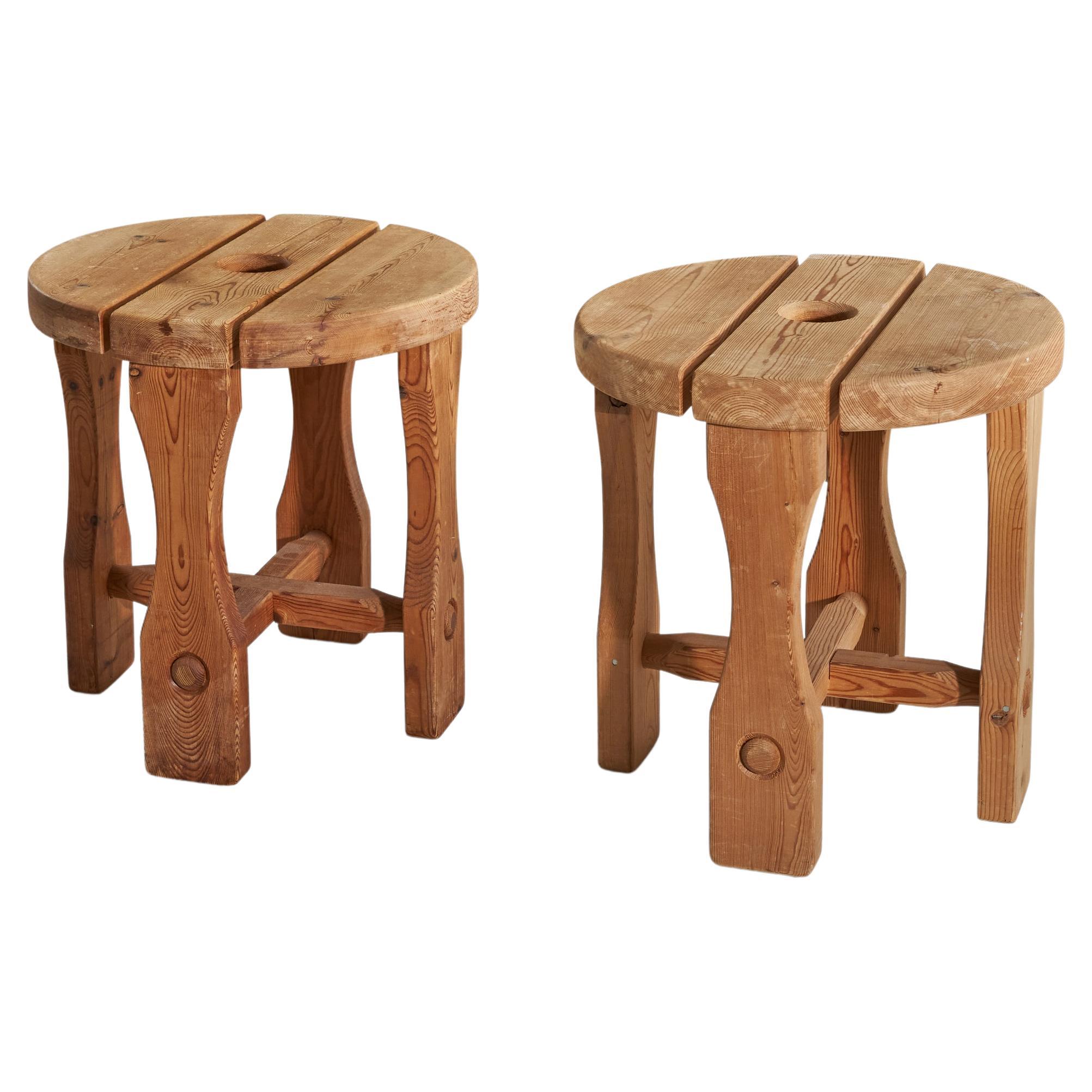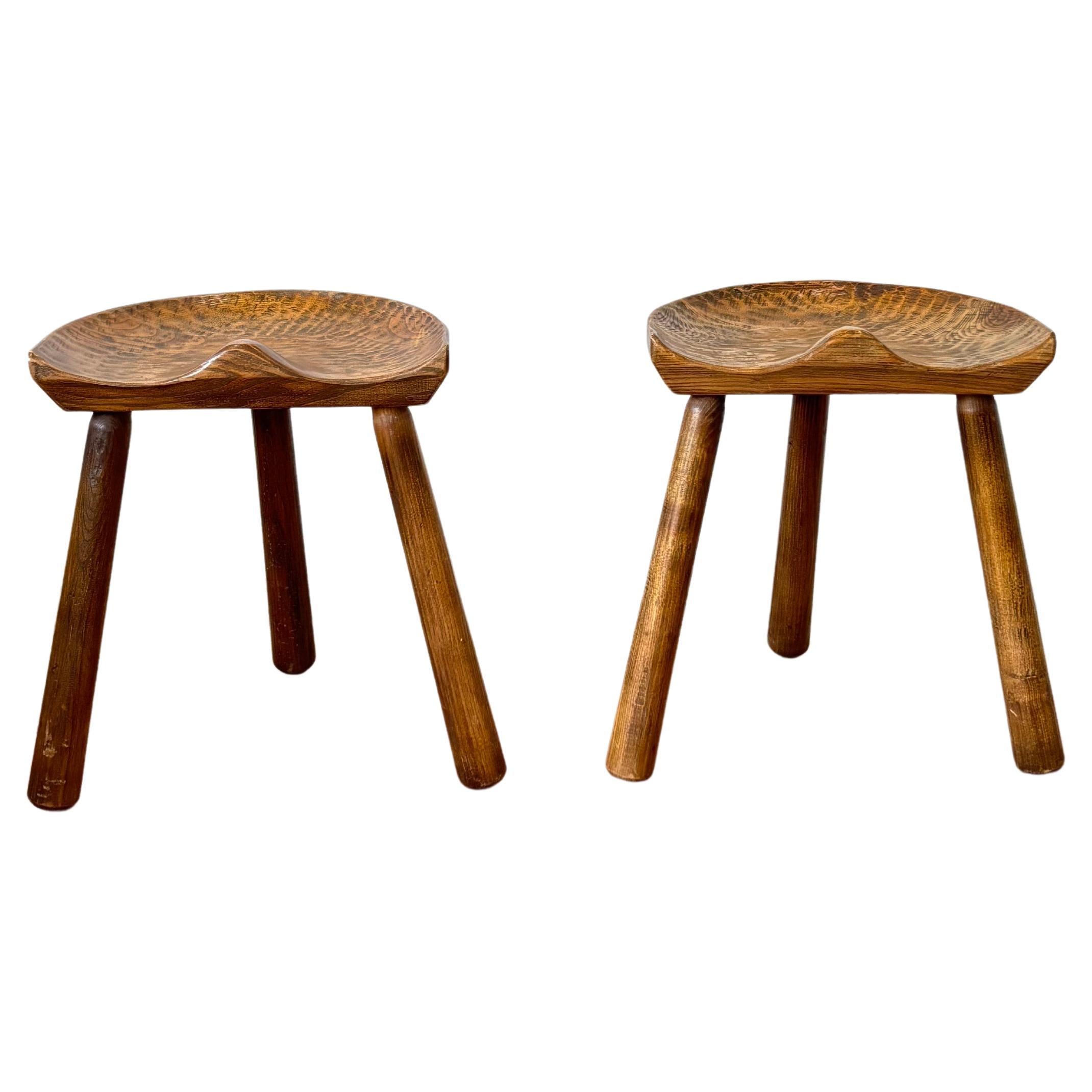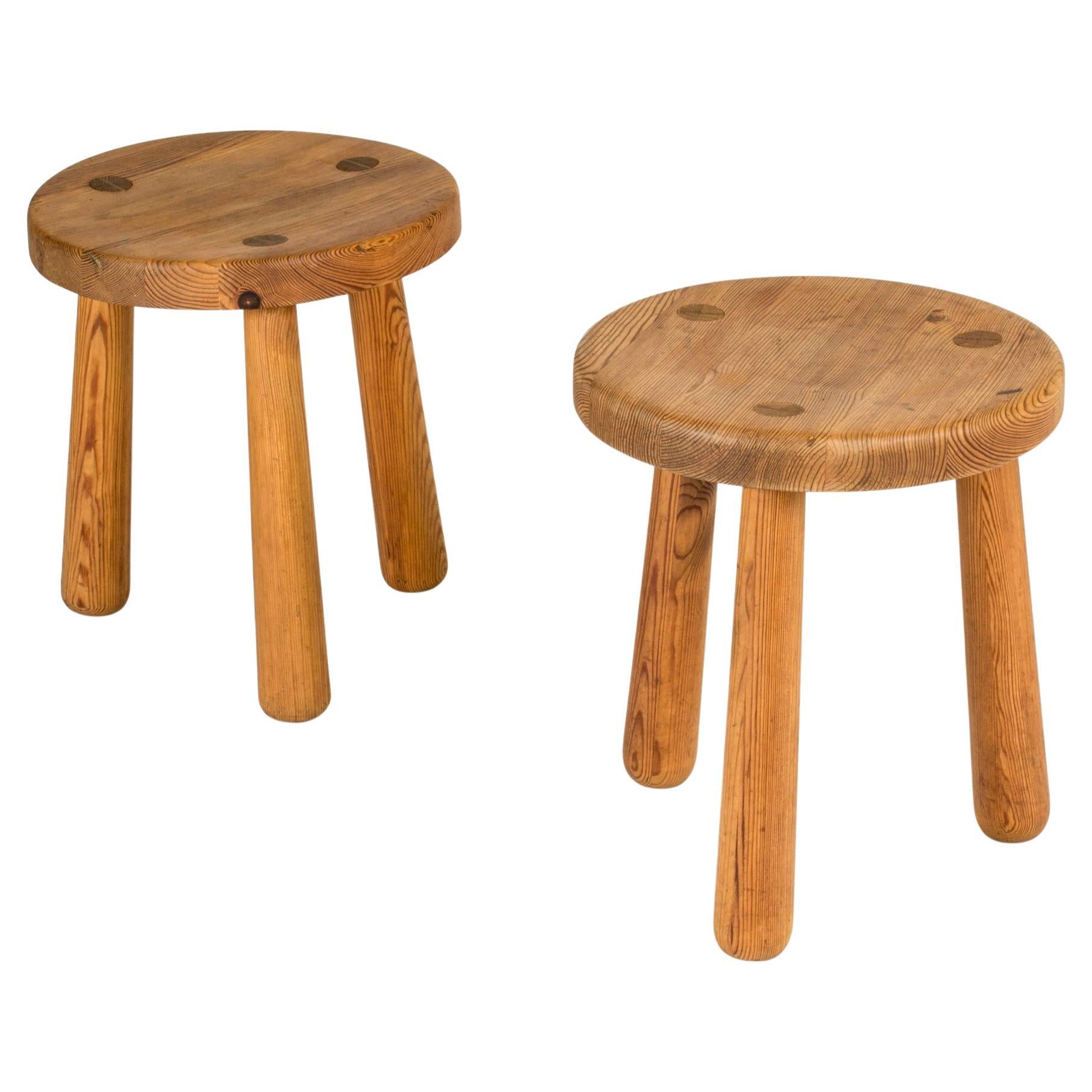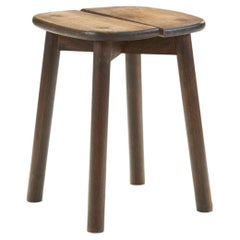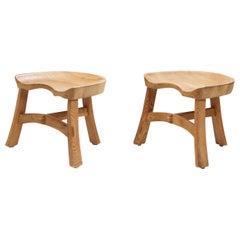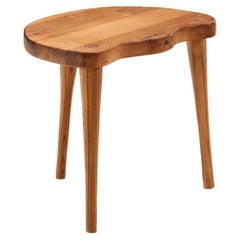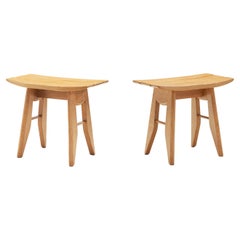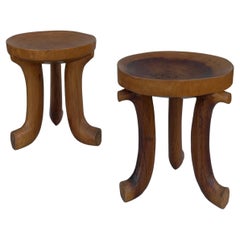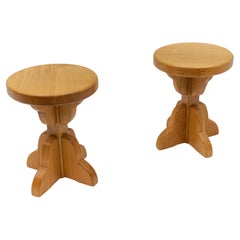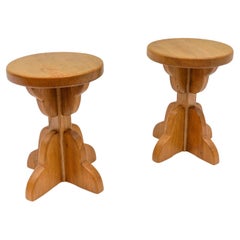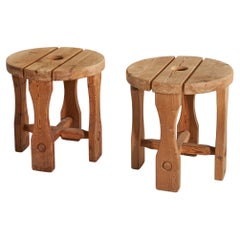Items Similar to Ethiopian-Style Stool with Scrolled Legs, Norway, First Half of the 20th Century
Want more images or videos?
Request additional images or videos from the seller
1 of 17
Ethiopian-Style Stool with Scrolled Legs, Norway, First Half of the 20th Century
On Hold
$3,300per set
On Hold
£2,516.76per set
On Hold
€2,899.96per set
On Hold
CA$4,713.97per set
On Hold
A$5,182.47per set
On Hold
CHF 2,678.90per set
On Hold
MX$62,011.54per set
On Hold
NOK 33,820.49per set
On Hold
SEK 31,707.65per set
On Hold
DKK 21,658.53per set
About the Item
E?thiopian and other African-influenced furniture had been made in Europe from the 1850s, the most famous being Adolf Loos’s “Theban stool” designed around 1903 in the Egyptian revival style. Based on its visual qualities, this pair of hand carved Ethiopian-style stools could have inspired Loos’s design.
This original design also took a piece of English furniture as its inspiration, although Liberty's three-legged stool was itself based on an ancient Egyptian stool seen by Leonard Wyburd in the British Museum. Loos' version differed from this by virtue of its tighter proportions. Josef Frank developed yet another more elongated form around 1929. The body of these tripod stools are carved from a single tree trunk, which was a common technique in Africa during the 19th and early 20th century. The low seats have a deepening, uneven, organic seating surface and show the natural qualities of the wood. This creates a stunning, elemental aesthetic that praises both the material’s natural beauty and the craftsman’s work. Still, the eyes are immediately drawn to the curled, scrolling legs that support the seat. This shape is traditional for tribal stools from Ethiopia, especially for the ones created by the Jimma and Oromo people in the forest area of Western and Southern Ethiopia respectively. Traditionally, these stools were made of hardwood - similarly to Scandinavian pieces - and served a mostly functional purpose, such as for the tribe’s elderly who carried them around. This pair was most likely created in Norway inspired by the original African pieces.
These stools have a beautiful folk look to them with visible, raw craftsmanship and history. Using African and Asian tribal-inspired stools have become popular accent pieces in contemporary homes. This is because - like this pair - these pieces are all completely unique and carry a charm that is impossible to mass produce.
Condition:
In good vintage condition. Wear consistent with age and use. Some cracks in the wood.
Dimensions:
12 in W x 11.41 in D x 13.77 in H
30.5 cm W x 29 cm D x 35 cm H
Second stool
13.77 in W x 12.2 in D x 14.56 in H
35 cm W x 31 cm D x 37 cm H
Shipping:
These stools will be packaged and shipped with the greatest care and attention to make sure you will receive the items in gallery condition. Complimentary shipping within the Netherlands.
- Dimensions:Height: 14.57 in (37 cm)Width: 13.78 in (35 cm)Depth: 12.21 in (31 cm)
- Sold As:Set of 2
- Style:Brutalist (Of the Period)
- Materials and Techniques:
- Place of Origin:
- Period:
- Date of Manufacture:First Half of the 20th Century
- Condition:Wear consistent with age and use. Some cracks in the wood.
- Seller Location:Utrecht, NL
- Reference Number:Seller: 202212061stDibs: LU2947330881702
About the Seller
5.0
Recognized Seller
These prestigious sellers are industry leaders and represent the highest echelon for item quality and design.
Platinum Seller
Premium sellers with a 4.7+ rating and 24-hour response times
1stDibs seller since 2017
550 sales on 1stDibs
Typical response time: 5 hours
Associations
20th Century Specialists
- ShippingRetrieving quote...Shipping from: Utrecht, Netherlands
- Return Policy
Authenticity Guarantee
In the unlikely event there’s an issue with an item’s authenticity, contact us within 1 year for a full refund. DetailsMoney-Back Guarantee
If your item is not as described, is damaged in transit, or does not arrive, contact us within 7 days for a full refund. Details24-Hour Cancellation
You have a 24-hour grace period in which to reconsider your purchase, with no questions asked.Vetted Professional Sellers
Our world-class sellers must adhere to strict standards for service and quality, maintaining the integrity of our listings.Price-Match Guarantee
If you find that a seller listed the same item for a lower price elsewhere, we’ll match it.Trusted Global Delivery
Our best-in-class carrier network provides specialized shipping options worldwide, including custom delivery.More From This Seller
View AllMid-Century Wooden Stool with Split Seat, Europe Ca 1950s
Located in Utrecht, NL
Stools have been steadily increasing in popularity thanks to a number of reasons, the most obvious being their space-saving functionality. Stools can be used in any space to provide an easily moved alternative to more cumbersome furniture. However, thanks to their versatility, they can provide a lot of visual interest.
European mid-century design is generally characterized by a minimal, clean approach that seeks to combine functionality with beauty. With its focus is on simple lines and light spaces, this stool is devoid of clutter. Standing on four straight legs, the sole decorative element is the split seat...
Category
Vintage 1950s European Mid-Century Modern Stools
Materials
Wood
Scandinavian Pine Stools in the manner of Krogenæs Møbler, Scandinavia ca 1960s
Located in Utrecht, NL
What makes wood so appealing besides its natural beauty is the ease in which it can be cut and the array of beautiful shapes that can be sculpted from it. These mid-century stools, r...
Category
Vintage 1960s Scandinavian Scandinavian Modern Stools
Materials
Wood
Danish Solid Pine Tripod Stool, Denmark, 1960s
Located in Utrecht, NL
This stool is aesthetically, a tempered Modernism in design: clean forms without exaggeration with the high-quality work of Danish cabinetmakers. Humble in its material and size, thi...
Category
Vintage 1960s Danish Scandinavian Modern Stools
Materials
Wood
Pair of Guillerme et Chambron "Thierry" Oak Stools for Votre Maison, France 1950
By Guillerme et Chambron, Votre Maison
Located in Utrecht, NL
Form and function collide in this 'Thierry' stool model, a piece of accent furniture that is often underestimated. Designers define stools as jewels and statements in a room, and thi...
Category
Vintage 1950s French Mid-Century Modern Stools
Materials
Oak
Scandinavian Solid Wood Nesting Tables, Scandinavia ca 1970s
Located in Utrecht, NL
Created with mobility and flexibility in mind, nesting tables can be organized in an unlimited variety of stylish and functional configurations. Scandinavian models of the mid-centur...
Category
Vintage 1970s Scandinavian Mid-Century Modern Nesting Tables and Stackin...
Materials
Wood
Swedish Modern Pine Stool, Sweden 1940s
Located in Utrecht, NL
Minimalism may be currently in fashion, but there is one iteration of clean design that will never go out of style which is Scandinavian Modernism. It is no small achievement to be a...
Category
Vintage 1940s Swedish Scandinavian Modern Stools
Materials
Pine
You May Also Like
2 African Gurage Three-Legged carved solid wooden Stools, Ethiopia
Located in Den Haag, NL
A wonderfully pair of sculptural early 20th century Ethiopian Gurage Stools carved of one piece of wood showing a hand carved texture, with three curved legs supporting a convex bowl...
Category
Early 20th Century Ethiopian Tribal Stools
Materials
Wood
Pair of Mid-Century Modern Oak Stools, 1960s France
Located in Nürnberg, Bayern
Great decorative stool set from France, circa 1960s.
We have eight of the same model in different versions. All can be found in our other articles.
Light, normal signs of use.
Category
Vintage 1960s French Primitive Stools
Materials
Wood, Oak
Pair of French Mid-Century Modern Oak Stools, 1960s
Located in Nürnberg, Bayern
Great decorative stool set from France, circa 1960s.
We have eight of the same model in different versions. All can be found in our other articles.
Light, normal signs of use.
Category
Vintage 1960s French Primitive Stools
Materials
Wood, Oak
Swedish Designer, Stools, Pine, c. 1940s
Located in High Point, NC
A pair of pine stools designed and produced in Sweden, 1940s.
Category
Vintage 1940s Swedish Scandinavian Modern Stools
Materials
Pine
$7,600 / set
Pair of French Brutalist Artisan Made Three Legged Stools
Located in Sherborne, GB
'Le Selou' is an Artisanal seat, made in Millavoise in the Aveyron, France. Derived from the three-legged milking stool with the seat in th...
Category
1990s Stools
Materials
Walnut
Modernist "Utö" stools by Axel Einar Hjorth, NK, Sweden, 1930s
By Axel Einar Hjorth, NK (Nordiska Kompaniet)
Located in Stockholm, SE
Pair of “Utö” stools by Axel Einar Hjorth, made from pine. Rustic design, decorative spheres on the seats.
“Utö” is one of the series of furniture included in NK:s “Sporstugemöbler”...
Category
Vintage 1930s Swedish Scandinavian Modern Console Tables
Materials
Pine
More Ways To Browse
Antique Furniture Leg Styles
Carved Tree Trunk
Ethiopian Carved
Volcanic Stone Stool
Art Deco Piano Stool
Bone Inlay Stool
Carved Elephant Stool
Chain Stool
Chinese Elephant Stool
Dyrlund Bar Stool
Emeco Bar Stool
Erik Buch 61
Fish Stool
Folding Stools 1970s
French Rattan Bar Stool
Grasso Stool
Herman Miller Eames Walnut Stool
Jamaica Bar
